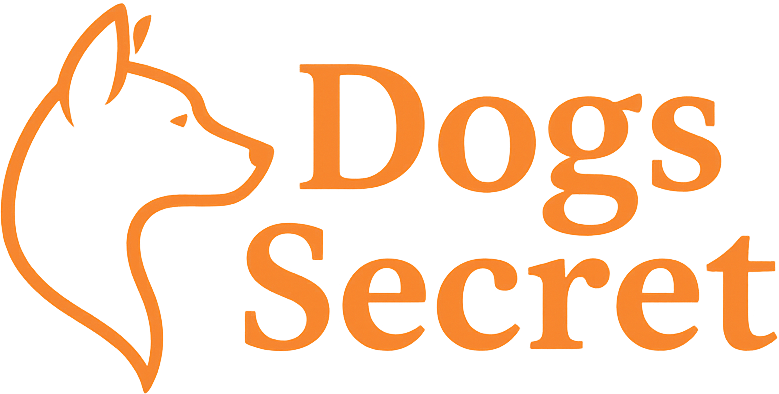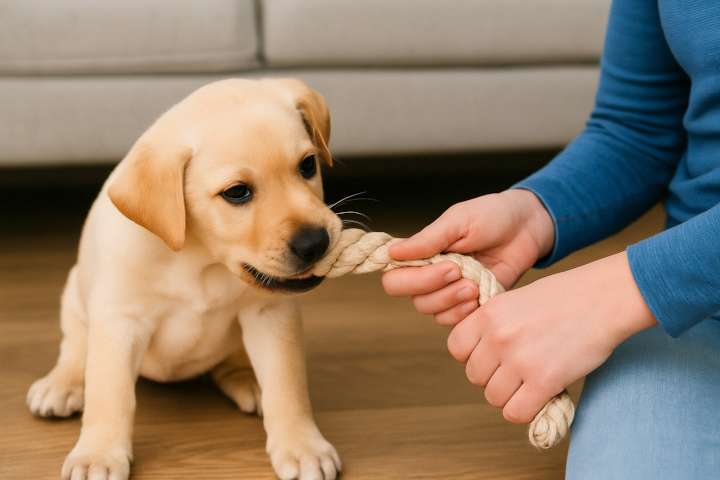Puppy teeth are sharp—and if you’ve been on the receiving end of a playful nip, you know how frustrating (and painful) it can be. But biting and chewing are completely natural parts of puppy development. They explore the world with their mouths, soothe teething pain by chewing, and use biting as part of social play.
The key isn’t to punish the behavior, but to redirect it in a positive, effective way. In this guide, you’ll learn why puppies bite and chew, and how to teach them appropriate boundaries with consistency and patience.
Why Do Puppies Bite and Chew?
- Teething pain (starts around 3 weeks and peaks between 3–6 months)
- Exploration and curiosity—they use their mouths to learn
- Play behavior—especially with littermates or humans
- Lack of impulse control (normal at a young age)
- Boredom or excess energy
It’s not aggression—it’s a normal phase. But if not redirected, it can develop into bad habits later in life.
What Not to Do?
Before diving into what works, here’s what to avoid:
- ❌ Don’t yell or hit your puppy
- ❌ Don’t shake them or hold their mouth shut
- ❌ Don’t play rough games that encourage biting (like wrestling with hands)
- ❌ Don’t let them “get away with it” because they’re small—it reinforces the behavior
These actions can damage trust, increase anxiety, or even make biting worse.
How to Redirect Puppy Biting (Step-by-Step)
✅ 1. Use Chew Toys as Substitutes
Always have appropriate chew toys nearby. When your puppy bites your hand or clothes:
- Calmly remove your hand
- Say “No” or “Uh-uh” in a neutral tone
- Immediately offer a chew toy
- Praise when they bite the toy instead
Keep a rotation of textures: rubber, rope, and teething-specific toys.
✅ 2. Teach Bite Inhibition
Bite inhibition is your puppy’s ability to control the pressure of their bite.
How to teach it:
- When your puppy bites too hard, let out a high-pitched “ouch!”
- Freeze your hand and stop play for 5–10 seconds
- If they stop and look at you, praise and resume play calmly
- If they continue biting, end play and walk away
This mimics how puppies learn with littermates—and teaches them that biting ends the fun.
✅ 3. Redirect Energy Through Play
A bored puppy is more likely to bite and chew.
Ideas for healthy play:
- Tug-of-war with rules (let go when told)
- Fetch with soft toys
- Puzzle toys or treat-dispensing balls
- Short training games (sit, down, touch)
Engaged puppies are less likely to chew on furniture—or you.
✅ 4. Reward Calm, Gentle Behavior
Catch your puppy being good!
What to reward:
- Gentle mouthing or no biting at all
- Choosing a toy on their own
- Sitting calmly instead of jumping or nipping
Positive reinforcement helps them understand which behaviors do get attention.
✅ 5. Use Timeouts for Persistent Nipping
If redirection fails:
- Calmly remove your puppy from the room for 30–60 seconds
- No talking or eye contact—just a short break
- Let them back in when calm and try again
Don’t overuse this—timeouts should be a last resort for repeated biting, not a punishment.
Additional Tips
- Teething support: Try frozen carrots, wet washcloths, or teething rings
- Avoid hands as toys: Always use objects during play
- Be consistent: Everyone in the household must follow the same rules
- Use gates or pens: Limit space when you can’t supervise
- Be patient: Most biting fades by 6–8 months of age with training
When to Seek Help
If your puppy’s biting is aggressive, causes fear, or includes growling and guarding behaviors, consult a professional dog trainer or behaviorist. It’s rare, but early intervention is essential if signs go beyond playful nipping.
Conclusion
Puppy biting and chewing are normal—but manageable—stages of development. With positive redirection, the right toys, and calm consistency, you’ll guide your puppy through this phase and build a respectful, well-mannered companion.
Need more help during the teething phase? Visit our Puppy Training Hub for chew toy guides, behavior tips, and printable progress trackers.

